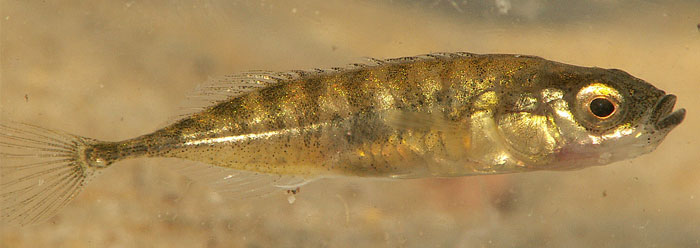Researchers scoured DNA from 22 representative stickleback fishes for any sequence differences that might be linked to saltwater versus freshwater environments. Their research should help answer questions about how fishes adapt to their surroundings and how closely those processes match standard ideas about evolution.
According to the Nature study, the team gathered interesting results, including specific sites of DNA differences that were directly linked to the fish's environment. They found the different sequences interspersed throughout all the fish's chromosomes. Also, fewer of those sequences were genes than those that were sequences that regulated genes. Both the genes and regulatory sequences were very similar between all the fishes studied, showing that they have been resistant to mutational changes. The authors wrote that since the different environment-linked DNA sites "do not cause protein-coding changes, they also probably contribute to adaptive divergence by regulatory alterations."1
Many of the DNA differences between the two populations involved differences in genes or regulatory regions that affect the fish's internal signaling mechanisms. For example, they discovered that a chromosomal inversion, where cell systems remove a section of DNA then splice it back in reverse, provided two different potassium channel genes. One version of the gene is found in the saltwater stickleback, and the other version in the freshwater fish relatives.
The fact that fish DNA coding sequences are precisely adjusted between generations to impact the way they interact with their environments clearly shows nonrandom, designed creation.
The Nature study authors first credited "natural selection" for the differences. According to this idea, the salt water produced certain fishes, and the fresh water produced other varieties from among the fishes. But they did not mention natural selection when they described the actual mechanisms behind the biological changes:
Changes in these biological processes, and in the individual genes defined by parallel divergence analysis [their DNA search], probably underlie recurrent differences in morphology [body size and shape], physiology [body biochemistry], and behaviour previously described in marine and freshwater sticklebacks.
So was it the different waters or the "biological processes" like chromosomal inversions and precise adjustments to relevant signaling mechanisms that altered the fishes to fit different niches?
These underlying biological processes of adaptation clearly show that ingenious biological design, not natural selection, is the most powerful explanation for the rapid and precise adaptability of sticklebacks. "'Nature selects forů' is the opposite of reality" for these fish that have all the hallmarks of expertly created mechanisms enabling them to fit different watery niches as they fill the earth.2
References
- Jones, F.C. et al. 2012. The genomic basis of adaptive evolution in threespine sticklebacks. Nature. 484 (7392): 55-61.
- Guliuzza, R. 2011. Darwin's Sacred Imposter: The Illusion That Natural Selection Operates on Organisms. Acts & Facts. 40 (9): 12-15.
Image credit: Ron Offermans
* Mr. Thomas is Science Writer at the Institute for Creation Research.
